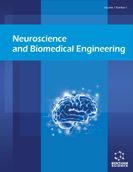Abstract
Background: Past studies of neurophysiological differences between the dominant (dM1) and non-dominant (NdM1) motor hemispheres in response to motor training have had equivocal results, possibly due to a lack of training task novelty. Understanding differences between brain hemispheres in the capacity for neural plasticity in response to motor learning is important for rehabilitation and occupational settings.
Objective: Our first objective was to develop an index finger tracking task that was equally challenging to both hands. The second objective was to measure neurophysiological changes in the dM1 and NdM1 in response to task performance.
Methods: In the first experiment, 12 right-handed males (mean age: 22.3, ±0.4 years; laterality index [LI] of 81.25±5.22) completed two training sessions of a tracing task designed to be equally novel and challenging for each hand, separated by 24 hours. In the second experiment, 20 right-handed males (M: 21.6 ±.0.4 years; [LI]=83.24±4.1) were randomly assigned to perform this training task with either hand. The slope of transcranial magnetic stimulation (TMS) input-output (IO) curves, was used to measure change in corticospinal excitability.
Results: Both hands had similar improvement of motor performance across two days of training (40% decrease in motor error for dM1 and 41% decrease for NdM1). Only the right hand significantly decreased IO curve slope over time (F (1, 18)= 1.319 with p=0.034).
Conclusion: This work suggests that the dM1 may adapt more quickly to tasks equally novel for each hand which has implications for the design of rehabilitation programs and devices.
Keywords: Asymmetry, Motor Training, Handedness, Motor Performance, Primary Motor Cortex, Corticospinal excitability.
Graphical Abstract
 3
3

